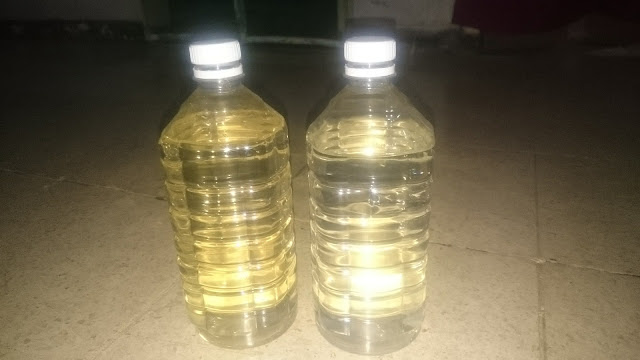 Alhamdulillah, starting the middle of the year with an abundance of healthy grace and time to greet readers who might be interested in writing that is poured into words in CITRO MDURO BLOGS. In the previous post update, we discussed a little about Nano Urea Fertilizer although the review is limited to a keyword overhaul that is expected to increase traffic and visits to this page. A little remember the habit of some time ago targeting keywords that are expected to provide better results for the development of this blog page, although not much. By utilizing google trends to get trending topics, whether this can be used, as well as google search assistance to get relevant and related search keywords.
Alhamdulillah, starting the middle of the year with an abundance of healthy grace and time to greet readers who might be interested in writing that is poured into words in CITRO MDURO BLOGS. In the previous post update, we discussed a little about Nano Urea Fertilizer although the review is limited to a keyword overhaul that is expected to increase traffic and visits to this page. A little remember the habit of some time ago targeting keywords that are expected to provide better results for the development of this blog page, although not much. By utilizing google trends to get trending topics, whether this can be used, as well as google search assistance to get relevant and related search keywords. Mixing up a series of sentences in a blog post by combining several related keywords, trying to spread it evenly in each resulting paragraph, because based on the search results, Nano urea fertilizer price is quite expensive compared to urea fertilizer commonly used by farmers in general. It is necessary to consider the cost of purchasing fertilizer as well as the additional operational costs required for the application of the Nano Urea Liquid Fertilizer . Of course, in the application process, it is not like sow fertilizer which can be applied in a model of 2 to 3 times of fertilization.
Meanwhile, if using liquid urea in nano size, regular application is needed, this is because the fertilizer given as plant nutrition is given through the leaf stomata in sufficient concentration and undergoes a fast release process and a fairly high evaporation rate. For this reason, the use of adhesive during the application of Nano Urea Fertilizer is sufficient so that the liquid that is sprayed smoothly on the stems of the plant is not easily separated and evaporates.
The question of ordinary farmers in general, is the same as that which crossed my mind. Can the Nano Fertilizer be processed or processed independently by the farmers so that it will save more on the cost of purchasing fertilizers circulating in the market at a price that is quite cheap for those who have large capital and very expensive for farmers in general?
Based on my logic, this can be done and it takes creativity from farmers to create fertilizers that are much cheaper but can provide maximum results. Utilizing the fermentation process according to my logic can be used as an alternative to get liquid fertilizer that is split into nano size. By utilizing improvised microbes, I believe, God willing, quality liquid fertilizer adapted to the plant phase can be obtained at an affordable price even though the precision of the content is not precise as is done through advanced technological processes and laboratory research results.
What I've ever done is ferment NPK 16:16:16. 1 Kg NPK origin Russia, dissolved with the help of 1 bottle of battery water. Leave it until it becomes a slurry or until bubbles are not visible (as I understand NPK is partially soluble in acid).
Next, after the NPK slurry is ready, add lime water so that the pH increases slightly, add the required or available macro and micro elements, add the CHO element (in this case I use granulated sugar) approximately 100 grams. Next, I added MOL of bamboo roots (you could say nitrobacter) with a pH of around 8 little by little because in the process of adding these moles, bubbles were formed which were quite strong and could cause the solution in the container to spill. While stirring slowly, the addition of MOL is continued until the total target solution reaches 5 liters or the pH is above 6.5. Please check the ppm after the solution has calmed for an initial comparison, then re-check the pH and ppm a week later. The addition of oxygen can be done with the help of a tool or directly closed tightly. Free to like according to taste.
My logic is that because there is an increase in ppm after 1 week of the fermentation process, the minerals contained in the solution can be said to increase even though the amount does not increase so that the reading of the ppm meter changes. For the application, I use the ppm benchmark in the range of 2500 to 4000 ppm for spray application, and the results thank God are no less competitive with neighboring lands that use quintals of fertilizer even though the harvest target is still below the usual standard agricultural SOPs. The rice yields are in the range of 5 tons per hectare, and are still included in the standard and must withstand ridicule with the treatment of land subsidence every week is still equivalent to neighboring land which is less than 7 times cleared of land.
For pesticides, I have planted 3 times, thank God I have never used pesticides on rice plants to deal with insect attacks because thank God it can be said to be free from insect and fungal attacks such as blast and crackle



